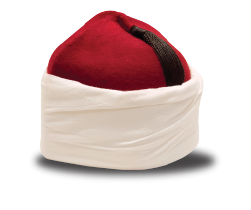Memoir Eng
Chapter 12: Al-Arqam and Nadamurni
I long for the glory of Islam
Rise again with splendour O Islam
Echoing the previous triumphs in Islam
I hope for the return honour of Islam
Friends let’s start a revolution
March forth till its completion
Fight for Islam it’s an obligation
Fulfilling the promise of our generation
Friends let’s assemble and join forces
Sacrifice our wealth and gather our resources
Fight for victory with smiles on our faces
Friends let’s not tarry in worry
Stuck in useless fantasy
Avoid the fancies because we must hurry
Fulfilling Islam’s honour towards our victory
Let’s move forward
Don’t waste time
This is the time we prove it
Let’s move forward
Don’t waste time
If our love for Islam is true
The new song from the group Nadamurni has been played on repeat in Zul’s rented house. Since it was first founded in 1987, the name Nadamurni has been rapidly climbing up the charts in the local music industry. In the 80s era, during the time when rock music is dominating the Malaysia music scene, SYJ, rusty Blade, Kembara and Lavender is a huge phenomenon. Overseas, Iron Maiden and Metallica was the legendary bands followed by millions of rock music enthusiasts. In the middle of the rock music “tsunami”, a group emerges at al-Arqam sermon ceremonies with a unique image of men in jubah and turbans, which subsequently forever change the entertainment industry’s landscape in this country.
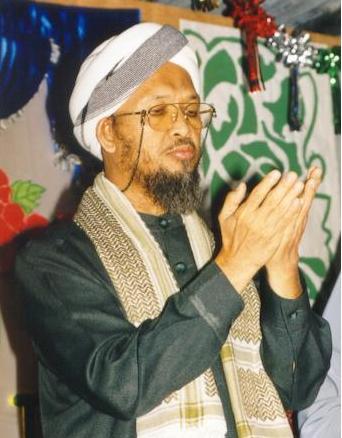
In the midst of the UMNO-PAS political unrest, the rise of ardour and spirit of Islam brought about the emergence of a third alternative as a choice for the minority of the society who want a different approach for Islamic movements. Al-Arqam managed to greatly influence and affect the local society, attracting them back towards Islam by practising the true teachings of Islam and forming their own jamaah (group) that practices Islam in their lives. Al-Arqam is founded by Ustaz Ashaari Muhammad (or friendly known as Abuya by his followers, there was even a song titled Bila Abuya Pulang (When Abuya Returns)) that started as just a small group that studies fardhu ain in a white house in Datuk Keramat, Kuala Lumpur. [1] The followers called the house the White House and then its name changed to Darul Arqam, a name suggested by Ustaz Zakaria Ansari [2]. Starting from the opening of a 5 hectares Islamic Village in Sungai Pencala, Darul Arqam continues to evolve through education, social, economic and political sectors.
“Zul, let’s go to the Nadamurni concert. It’s going to be at Kuala Terengganu Stadium…” Rosli invited Zul to join him that evening. Everyone was excited to attend the concert for that was the first time each of them ever had the chance to attend a concert. Entertainment in the form of music for religious school students is very limited due to various factors. Among them is that maybe the rock genre is generally seen as unIslamic and it is synonymous with westernization that contradicts the rise of the spirit of Islam in the 80s. Hence, it is not easy for a Thanawi student to attend any concert.
The whole look and ambience around Terengganu Stadium near Sultanah Nur Zahirah Hospital (HSNZ) completely changed. All of them were surprised and dumbfounded by the change. It is as though Terengganu has moved to another dimension; most men were wearing jubah and turban while the women wore purdah (full veil), just their eyes were visible. Al-Arqam considers such clothing as the sunnah of the Prophet PBUH and Islamic customs. [3]
Several Pajeros just arrived, driving past them and to the car park. In the 80s Pajero is considered as the vehicle of the wealthy and rarely a Malay could own one. However, if a Malay drives a Pajero, it is almost certain that he is an al-Arqam member. That’s how secure al-Arqam’s economy is that even Chinese business owners respected their business portfolio. Al-Arqam Muslim supporters who are not their members are known as Arqam batik while the non-Muslims are called Zimmi Jemaah.
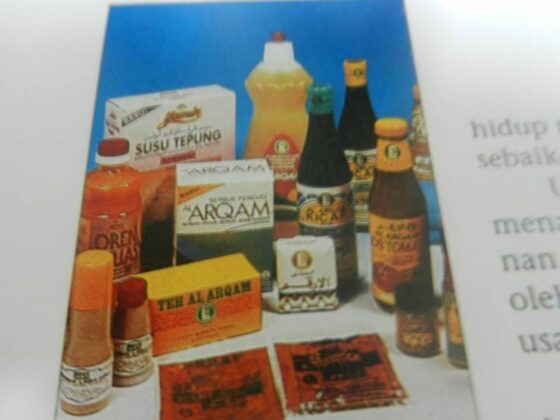
Rows of stalls filled the streets outside the stadium selling various food, drinks and al-Arqam products such as soy sauce, oil, taucu, chilli sauce, tomato sauce, mee (noodles) and others. Handwritten signs and banners can be seen such as “Syukbah al-Tijarah wa al-Sina’ah Dar al-Arqam” or famously known as Dar al-Arqam Business and Trade Bureau [4] and “Syukbah al-Zira’ah” (Agriculture Bureau) which provide several project opportunities for the public such as for the agriculture of rice, coconut, vegetables, fruits, animal farming such as chickens, cows, sheep and others. [5]
There are also mobile clinics with a sign written with the words “Syukbah Kedoktoran”. The clinic is owned by al-Arqam and it combines modern and traditional medicine as well as homoeopathy system for various illness and recovery treatments. “Come, you’re all welcome here. We are open for everyone regardless of race and religion! To date, alhamdulillah we have a total of 24 treatment centres!” A guy wearing jubah and turban with a stethoscope around his neck beckons the visitors.
At the stadium’s entrance, they were greeted by a young man wearing jubah, turban and a “Syukbah I’lam (Information Bureau)” vest. “Assalamualaikum… how are you? Welcome.” As they were greeted, Zul and his friends were each also hugged tightly as though they have known each other for ages. That is the tradition in al-Arqam. It is so that anyone who met them will feel comfortable and at ease.
Each of them is also given a goodies bag filled with al-Arqam magazines in Malay (Rumi and Jawi) and English versions. Several books and introductory brochures about the organization published by al-Arqam are also included in the bag. It is quite a peculiar feeling when you are surrounded by al-Arqam members. Zul and his friends felt like fish out of water when they are among the very few people wearing normal clothing. Yes, there were some visitors who were not members of al-Arqam (based on their clothing), but looking around, the majority of people are al-Arqam members.
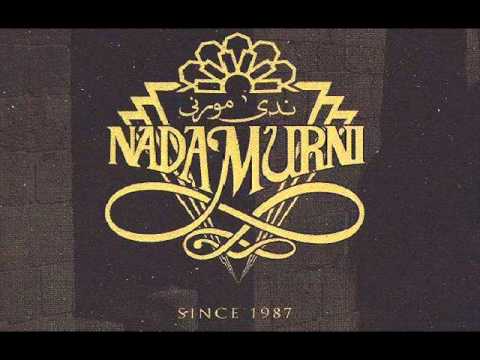
On stage, there were Asri Ibrahim, Isman Nadim, Faizal Osman, Munif Ahmad, Azadan Abdul Aziz, Rahmat Shafie and several less well-known artists. They were smartly dressed, wearing thick Turkish turban, white jubah decorated with shimmering embroideries and lace. Popular songs such as Assalamualaikum, Kegelapan, Kasih Sayang, Balada Makkatul Mukarramah, Untukmu Rasulullah and of course Nadamurni’s hit song are sang accompanied by percussion music. With the help of smoke machine technology, colorful lights and PA system which were fully handled by Cultural Syukbah al-Arqam, Kuala Terengganu Stadium looks as grand as Royal Albert Hall in London!
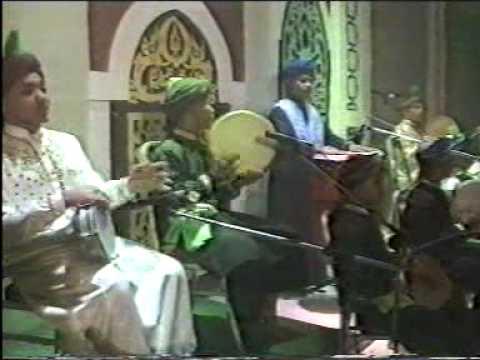
“Zul, what’s your opinion on the issue of listening to music? Is it prohibited or permissible?” Ahmad Syukri who was sitting beside him suddenly asks. Zul was hunched for a few moments, thinking deeply before saying, “Ibn ‘Abd Rabbihi al-Andalusi in al-‘Iqd al-Farid concluded that it is an issue where scholars have differing opinions. The ruling of music and singing is the same as poetry. If the meaning is good then it is good. If the meaning is bad then it is considered bad. [6] You can study the hadiths that restrict music and singing. Most state the restriction together with the prohibition of alcoholic beverages. Hence, most scholars said the prohibition of music and singing is not for the music and singing themselves. Thus, I’m inclined towards the fatwa issued by our contemporary scholars such as Syakh Yusuf al-Qaradawi which ruled music and singing is permissible as long as there are no elements of sin and useless matters.”
The stadium suddenly went dark. A beam of bright light came from above, shining at the corner of the stage. Smoke starts to slowly fill the hall of Kuala Terengganu State Stadium. In the bleary light, Ustaz Dinie Juri emerges wearing a white jubah and a green turban on his head.
“Sakaraaattt…! Sakaraaattt…! Sakaratul mauuuutttt…!!!”, Ustaz Dinie Juri’s euphonious voice echoed, cutting through the silent night in Kuala Terengganu. Indeed, his golden voice would surely touch whoever listens to it.
“I’m being punished in my grave. Waiting! Waiting for my child’s prayers: Where is the prayer of my child who is a lawyer? Where is the prayer of my child who’s a doctor? Where is the prayer of my child who’s an architect? Where is the prayer of my child who’s a professor? Where…? Where…? Where…???!!!”
____________________
[1] Tajul Ariffin. “Rumah Putih Arqam di Lorong Dua Datuk Keramat (Arqam’s White House in Lorong Dua Datuk Keramat)”, in Mingguan Islam, 8th April 1988; Mohd. Rom al-Khudri. “Bagaimana Saya Ikut Kumpulan Rumah Putih (How I’m Involved with the White House Group)”, in Mingguan Malaysia, 13th – 20th May 1988. [2] He was among the first followers of the White House group. However, due to a disagreement on the leadership of Ustaz Ashaari he exited Darul Arqam on 1979 [3] Jaafar Salleh, “Penjelasan Mengenai Pemakaian Serban (Explanation on Wearing a Turban)”, in al-Arqam, no. 2, Year 8, December 1985; “Apakah Makna Jubah Hijau di Darul Arqam? (What is the meaning of the Green Jubah in Darul Arqam)”, in Keluarga, Mac 1978; Jaafar Salleh, Serban dan Jubah Pakaian Islam, (Kuala Lumpur: Penerangan al-Arqam), 1986; Mizwah Adam, “Purdah bukan Adat Resam tapi Perintah Allah (Purdah Is Not A Custom but Allah’s Commandment)”, in al-Arqam, No. 2, Year 7, February 1984.” [4] “Darul Arqam Cuba Tegak Perniagaan Ikut Al-Qur’an dan Sunnah (Al-Arqam Efforts in Establishing a Business Following the Guidance of al-Quran and Sunnah)”, in al-Arqam, no. 5, Year 3, May 1985; Sistem Ekonomi Islam dapat Selamatkan Umat (Islamic Economic System In Saving the Ummah)”, in al-Arqam, No. 2, Year 3, February 1985. [5] “Sektor Pertanian Ditingkatkan dengan Membuka Pusat Latihan (Improvement of Agriculture Sector by Opening Training Centres)”, in al-Arqam, No. 5, Year 3, May 1985; “Al-Arqam Lancar Projek Madu (Al-Arqam Launches the Honey Project)”, in al-Arqam, No. 3, Year 7, March-April 1984. [6] See al-‘Iqd al-Farid, 7/10